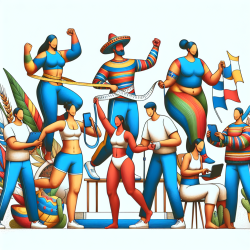Height, Health, and Happiness: Insights from Latin America
As a Special Education Director, you are no stranger to the complexities of health, education, and the diverse needs of your students. Today, we delve into a fascinating study that explores the relationship between body height, waist circumference, and self-reported health in rural indigenous and urbanized Latin-American populations. This study not only offers insights into health indicators but also encourages further exploration into how these factors may influence educational outcomes and student well-being.
The Study: A Closer Look
The research, titled Self-reported Health is Related to Body Height and Waist Circumference in Rural Indigenous and Urbanised Latin-American Populations, examines three distinct populations: two urbanized groups from Bogota, Colombia, and Mexico City, Mexico, and an isolated indigenous group, the Me’Phaa, from Mexico. The study aims to determine how body height and waist circumference interact to predict self-reported health across these diverse groups.
Key Findings
- Height and Health: The study found that self-reported health is best predicted by an interaction between height and waist circumference. Taller individuals with smaller waists reported better health, while this association was not evident in individuals with larger waists.
- Waist Circumference: A significant negative effect of waist circumference on self-reported health was observed, aligning with existing research that links waist size to metabolic syndrome and cardiovascular risks.
- Socioeconomic and Ecological Impact: Urban populations reported better health than the indigenous group, highlighting the impact of socioeconomic conditions and access to healthcare on health perceptions.
Implications for Practitioners
As educators and health practitioners, understanding the nuances of this study can enhance your approach to student health and well-being. Here are some actionable insights:
- Holistic Health Assessments: Consider incorporating assessments of body height and waist circumference in health evaluations to better understand student health profiles.
- Socioeconomic Context: Recognize the role of socioeconomic factors in health outcomes and advocate for resources and support for underserved communities.
- Further Research: Encourage further research into how these health indicators may affect educational outcomes, particularly in diverse and underserved populations.
Encouraging Further Exploration
This study opens the door to numerous questions about the interplay between physical health indicators and educational success. As a leader in special education, you have the opportunity to spearhead initiatives that integrate these findings into educational strategies and policies.
To read the original research paper, please follow this link: Self-reported Health is Related to Body Height and Waist Circumference in Rural Indigenous and Urbanised Latin-American Populations.










